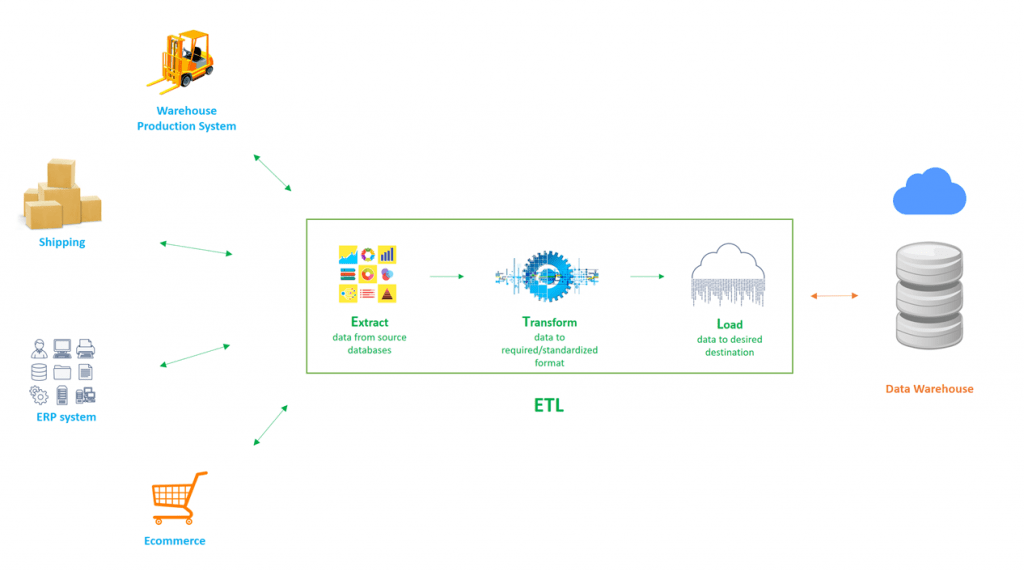Industry Insights at 7Clouds® Stay Connected with Industry Trends, Tips and News
Introduction to ETLs

The amount of data flowing through businesses is at an all-time high, and it’s growing. Cloud-based ETLs offer scalability and simplicity that allow SMBs and enterprises to adapt to this growth and increased complexity.
What are ETLs?
Growing a successful SMB or enterprise involves managing enormous amounts of data from various sources. Systems for production operations, database management, and software applications for BI (Business Intelligence) and ERP (Enterprise Resource Planning), all contribute to these datasets and must collaborate within a common framework. ETLs (Extract, Transfer, Load) use a three-step process to allow for this collaboration, combining data from multiple sources into a single database, or data warehouse. These steps are described as follows:
- Extract: Data is collected from the various sources within a framework (databases, software applications, …)
- Transform: Extracted data is converted to a format corresponding to its desired destination
- Load: Transformed data is written into the new database/application
By storing extracted data in a single data warehouse, it can be transformed and loaded at any time to communicate and collaborate between the different sources. The figure below outlines this process.

Each data source example given here – Warehouse Production System, Shipping, ERP system, and Ecommerce – “speaks” a different language. ETLs act as translators on demand, storing the data from each source in a common format and translating it, as needed, back and forth to various sources and users in the framework. The result is a real-time storage and communication cycle, which hugely facilitates business operations. And it gets better: in the cloud.
Cloud-based ETLs
Traditionally, ETL processes were done locally to manage data physically close to the analysts that used it. Today, inexpensive data storage options, fiber networks, and increasing processor speeds are causing exponential growth in the amount of data flowing through businesses.
Current cloud-based ETLs offer the scalability required to keep up with this growth while managing the entire ETL process in one place. This provides the simplicity that businesses need to adapt to the growing complexity of their databases and applications.
7Clouds - Contact us today to ensure stable growth for your business via our managed services.

References
Better Programming (SeattleDataGuy), What Are ETLs and Why Are They Important? October 2019.
Data Warehouse Guide (Panoply), ETL Tools: Comparing the Best Cloud-Based and Open Source Tools. 2019.
Talend, ETL in the Cloud: What the Changes Mean for You. October 2019.
Featured image: Pixabay
Tags
Latest Posts
Popular Posts
-
From SMEs to Families: Enterprise Virtualization Tips for Confinement with the Kids
From virtual machines to virtual workplaces, SME virtualization technology is securing its place in the family household as COVID-19 keeps us home. The shift towards...
-
7Clouds® Managed Services Yield Results
7CLOUDS Managed Services Yield ResultsDownload





Stay Connected With Industry Trends & News
Sign Up for Our Newsletter

